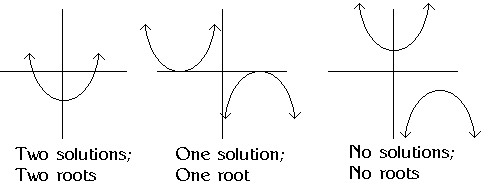





When the zeros of a quadratic relation are known, the value of "a" can be determined if a point on the parabola is also known. "a" can be determined by substituting in the coordinates of the other point into the equation, along with the two zeros of the relationship.

(a) We know that the factored form of any quadratic relationship is in the form y = a (x - s)(x - t). Since we know that the zeros are -2 and 4, we can substitute these values in for s and t. Remember: We must change the sign when substituting in these values.
y = a (x + 2) (x - 4)
We also know that the parabola crosses the y axis at 4. This is the y-intercept, and, therefore, a point on the parabola is (0,16).
Now that we know a point on the line, we can substitute this value into the equation to solve for a.
16 = a (0 + 2)(x - 4)
16 = a (2)(-4)
16 = -8a
a = -2
Therefore, if we substitute -2 for a, we get
y = -2 (x + 2) (x - 4)
which is the factored form of this quadratic equation.
(b) We know that the zeros of the parabola are -2 and 4. This is very helpful, because we know that we can find the value of the axis of symmetry by finding the midpoint between the two zeros.
(-2 + 4) ÷ 2
=(2) ÷ 2
=1.
Therefore, the axis of symmetry is x = 1.
(c) Because we know that the axis of symmetry is x = 1, we also know that the x-coordinate of the vertex is 1 (because the vertex is not only the highest or lowest point on a parabola, but it is also the place that divides the parabola into two equal sections).
Since we know that the x-value of the vertex is 1, we can substitute this value into the equation of the parabola to find out what the y-value will be.
y = -2(x + 2)(x - 4)
y = -2(1 + 2)(1 - 4)
y = -2(3)(-3)
y = 18
Therefore, the vertex is located at the point (1,18).
Practice Questions
Page 280-83 # 1, 3, 5, 7, 8 ace, and 12.